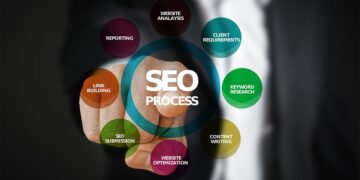Collaboration Between Humans and AI Explored
Artificial Intelligence (AI) has continued to revolutionize various aspects of our lives, from healthcare to transportation, finance to entertainment. But one of the most exciting areas where AI is making a significant impact is in collaboration with humans. The collaboration between humans and AI is reshaping the way we work, communicate, and solve complex problems.
AI technology is becoming increasingly sophisticated, and it is now able to understand context, learn from experience, and make decisions on its own. This has led to the development of AI systems that can work alongside humans in a variety of settings, augmenting our capabilities and enabling us to achieve tasks that would be impossible for either humans or AI to accomplish on their own.
One of the key benefits of collaboration between humans and AI is that it can lead to improved productivity and efficiency. AI systems are capable of analyzing vast amounts of data at high speeds, freeing up humans to focus on more complex and creative tasks. For example, in the medical field, AI-powered diagnostic tools can help doctors analyze test results and make treatment recommendations faster and with greater accuracy than human doctors alone.
In the business world, AI-powered chatbots and virtual assistants can help streamline customer service interactions, freeing up human employees to take on more strategic roles within the organization. By automating routine tasks and providing real-time data analysis, AI can help businesses make more informed decisions and respond to market changes faster than ever before.
But collaboration between humans and AI is not just about efficiency. It also has the potential to enhance innovation and creativity. AI systems are capable of generating new ideas based on patterns in data, which can inspire human users to think outside the box and come up with new solutions to complex problems.
In the field of art and design, AI-powered tools can help artists and designers explore new styles and techniques, leading to the creation of innovative and visually stunning work. For example, the AI-powered tool DeepDream has been used by artists to create surreal and dreamlike images that push the boundaries of traditional art forms.
Collaboration between humans and AI can also lead to new opportunities for learning and personal development. AI systems can provide personalized feedback and recommendations based on an individual’s unique learning style and preferences, helping them to acquire new skills and knowledge more effectively.
In the education sector, AI-powered tutoring systems can provide students with tailored lessons and support, helping them to achieve better academic outcomes. AI-powered language learning apps can help users practice their language skills and improve their fluency through real-time feedback and interactive exercises.
However, despite the many potential benefits of collaboration between humans and AI, there are also challenges and ethical considerations that need to be addressed. One of the main concerns is the impact of AI on the job market and the potential for job displacement as AI systems automate tasks that were previously done by humans.
It is important for policymakers and business leaders to consider how to ensure a smooth transition for workers who may be affected by AI-driven automation. This could involve retraining programs, job placement services, and policies that support workers in transitioning to new roles or industries.
Another important ethical consideration is the potential for bias and discrimination in AI systems. AI systems are only as good as the data they are trained on, and if that data is biased or discriminatory, it can lead to unfair outcomes for certain groups of people.
For example, AI systems used in hiring processes have been shown to exhibit bias against women and minority candidates due to the biases present in the data used to train the algorithms. It is crucial for developers and users of AI systems to be aware of these potential biases and take steps to mitigate them through careful data selection and algorithm design.
Despite these challenges, the collaboration between humans and AI has the potential to revolutionize the way we live and work. By harnessing the power of AI to augment our capabilities and enhance our creativity, we can unlock new opportunities for innovation, efficiency, and personal development.
As AI technology continues to advance, it is important for society to continue exploring the possibilities of collaboration between humans and AI and ensure that this partnership is guided by ethical considerations and a commitment to creating a better future for all. By working together with AI as partners, rather than as competitors, we can harness the full potential of this transformative technology and create a more prosperous and sustainable world for generations to come.












